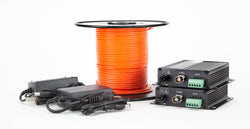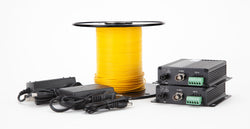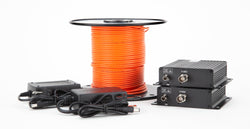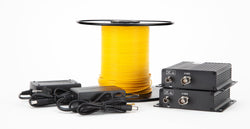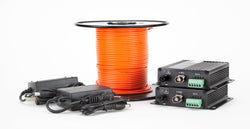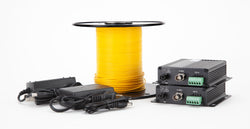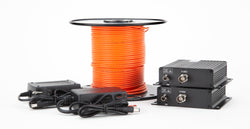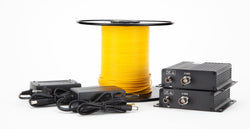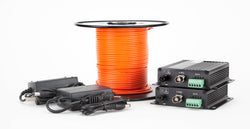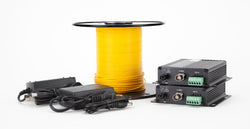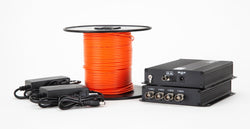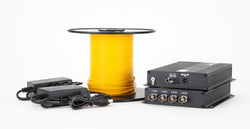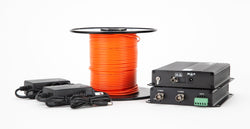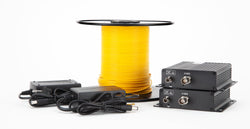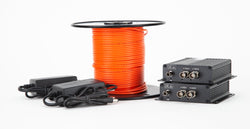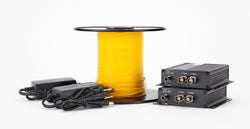VersiVision HD Video
VersiVision HD Video to Fiber Installation Kits
The VersiVision High Definition Fiber Optic Video Transmitters & Receivers support 1, 2, or 4-channels of 8-bit digitally encoded HD-CVI, AHD, or HD-TVI video. The video + data versions also support 1-channel of bi-directional data over one multimode or singlemode optical fiber. The optimized modules are compatible with 1280H/25F, 1280H/30F, 1280H/50F, and 1280H/60F to ensure the highest performance for the most demanding applications. A typical installation utilizes a transmitter unit at the camera end of the link, connected via a single fiber optic cable, to a receiver unit at the monitoring end of the link.
As part of our VersiVision series of products, we also offer fiber optic video transmitters and receivers for converting devices with an HD-SDI interface.
About VersiVision High Definition Transmitter and Receiver Kits
The HD over coax or HDoC technology is an efficient alternative to IP networking systems for video surveillance. HDoC comprises High Definition-Composite Video Interface (HD-CVI), High Definition-Transport Video Interface (HD-TVI), Analog High Definition (AHD), and High Definition-Serial Digital Interface (HD-SDI) technologies. These are open platform technologies which convert broadcast quality HD video signals to fiber optic. VERSITRON offers all of the equipment you need to convert your HD-CVI, HD-TVI, and AHD camera signals to fiber optic cable in one convenient installation kit! Each kit includes the following:
- HD-CVI, HD-TVI, AHD, HDSDI Video Transmitter
- HD-CVI, HD-TVI, AHD, HDSDI Video ReceiverM
- Power supplies
- 100 meters of Multimode or Single Mode Fiber
Features and Specifications of HD Video to Fiber Converters
Our HD devices support 1, 2, 4, or 8 channels of 8-bit digitally encoded high definition transmitter AHD/CVI/TVI video as well as solutions for bi-directional data if your HD cameras support Pan, Tilt, and Zoom capabilities. The hot-pluggable and adjustment-free design ensures the convenience of the installation and operation. The modules are available in either standalone or rack-mount versions. So if you are looking for a way to extend your high-definition analog camera signals to distances of up to 30km, let us help you! Our HD-CVI, HD-TVI, and AHD video converters provide you with the following benefits:
- They offer broadcast quality signal transmission.
- Our HD video devices can transmit up to 30km without optical attenuation.
- All units are digitally encoded.
- They support simplex or full duplex data transmission modes.
- These devices are compatible with NTSC, PAL, or SECAM videos.
- The transmission is seamless and there is no EMI, RFI, cross talk or video distortion.
- The systems come with LED indicators for instant system monitoring.
- Standalone or rackmount installation into 18-slot video chassis.
- WDM Technology for higher reliability.
- Units are compatible with Multimode or Singlemode fiber.
Quality and Warranty
We are committed to the quality and workmanship of our High Definition video transmitters and receivers and other related devices. As with all VERSITRON products, these converters have a lifetime warranty. Please refer to our warranty statement for a detailed explanation regarding warranty claims and procedures.
We help you achieve uninterrupted and high-quality video transmission signal conversion from coaxial cables to singlemode or multimode fiber. Let us assist you with your project today! We would welcome you to contact us via phone or email.

